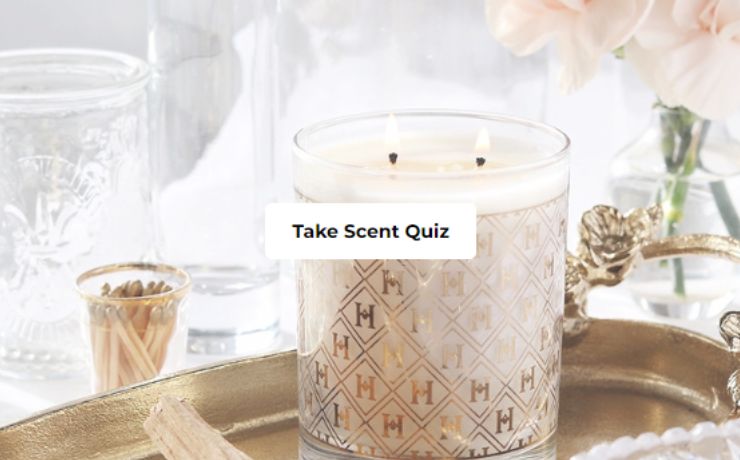How Hot Does A Candle Get? (And How to Avoid Getting Burned!)

Have you ever wondered whether your candle is getting dangerously hot, or if it's safe to move a burning candle? In this article, let's talk about how hot a candle gets.
How hot does a candle get?
The temperature of a burning candle varies based on which part you're touching. The hottest part is the flame, which can reach temperatures of up to 1,400 ºF. Molten candle wax can be anywhere from 120–400 ºF, depending on the type of wax used. Lastly, the glass container of a candle is usually around 100–140 °F during normal use.
It's important to keep this in mind when handling candles and to take appropriate precautions to prevent burns and other accidents.
The Temperature of a Candle Flame
The average candle flame generates between 80 to 100 watts of heat. The temperature is hottest at the base of the flame (at the tip of the candle wick) and decreases as you move further away.
You can make a pretty good estimate about the temperature of a candle flame based on its color:
- Blue: around 1,400 ºF
- Yellow: around 1,200 ºF
- Orange: around 1,000 ºF
- Red: around 800 ºF
The temperature of the flame can also be affected by other factors, such as the type of wax used, the size and shape of the wick, and the surrounding environment (e.g. airflow and humidity).
To keep your flame from getting too hot, remember to follow proper wick maintenance! Trimming your wick regularly will prevent the flame from getting too tall and hot.
THE TEMPERATURE OF CANDLE Wax
Despite how calming and beautiful your wax pool appears, molten candle wax is NOT safe to touch!
The temperature of molten candle wax can range from 120 ºF to around 400 ºF (sometimes even higher). Several factors affect the exact temperature, such as the type of wax, how far it is from the flame, and how long the candle has been burning.
The melting points of different waxes can give you a conservative estimate of how hot your wax pool is. For example, the melting point of soy wax is between 130–150 ºF depending on the blend and any additives. So anytime you see molten soy wax, you know it's at least 130 ºF, which is hot enough to cause second-degree burns.
The melting point of paraffin wax is between 115–154 ºF, which means the wax pool of a paraffin candle is at least 115 ºF, which is at least hot enough to cause first-degree burns.
Now that you know how hot melted wax gets, remember to always keep burning candles out of reach of curious children and pets. And avoid blowing out your candles, since you might send a splash of molten wax flying if you blow too hard. Use a candle snuffer or wick dipper instead.
The Temperature of Candle Containers
Be very, very careful when holding or moving a hot candle because the temperature of the container can reach upwards of 100–140 °F (depending on the material of the container, the size of the candle, and the burn time).
It's always safer to extinguish the candle and let it cool before moving it.
In general, glass containers tend to get hotter than metal or ceramic containers because glass is a better conductor of heat. Per ASTM standards (ASTM F2417-04 Section 4.4), the maximum allowable surface temperature is 140 °F for glass candle containers and 125 °F for metal candle containers.
The hottest part of the container is the section surrounding the flame and the molten wax pool. The bottom of the candle, and any part with solid wax, is usually cool enough to touch.
Always use caution when handling a burning candle and avoid touching the container until it has had sufficient time to cool down.
Candle Safety Tips
To avoid getting burned by your lovely scented candles, it's important to follow some basic safety tips:
-
Avoid touching a burning candle or its melted wax. Wait until the candle has cooled down and the wax has solidified before handling it.
- Never leave a burning candle unattended. Always extinguish the flame before leaving the room or going to sleep.
- Extinguish the candle after it has been burning for 4 hours. Letting it burn longer will cause the wick to get too long and lead to a larger flame and excessive heat, which can damage the container or surrounding surfaces.
-
Use a candle snuffer or wick dipper to extinguish the candle instead of blowing it out (to avoid accidentally blowing melted wax everywhere).
-
Trim the wick of a candle to 1/4–1/8 inch before lighting it. A long wick can cause the flame to be too large and hot, leading to a fire hazard. Also, a trimmed wick helps the candle burn evenly and last longer.
-
Do not burn your candle all the way down, otherwise the bottom of the glass container may get too hot and possibly break. Always leave at least 1/2 inch of non-molten wax at the bottom.
- Keep candles out of reach of children and pets.
-
Keep candles away from flammable objects, such as curtains, paper, and fabrics.
-
Also, keep candles away from drafts and air currents that can cause the flame to flicker and spread.
-
Place candles on sturdy and heat-resistant surfaces, such as metal, glass, or ceramic. Avoid placing candles on wooden surfaces or near other combustible materials.
- Use candle holders and accessories that are designed for candles. Don't use makeshift holders, such as cups or jars, that may break or tip over.




